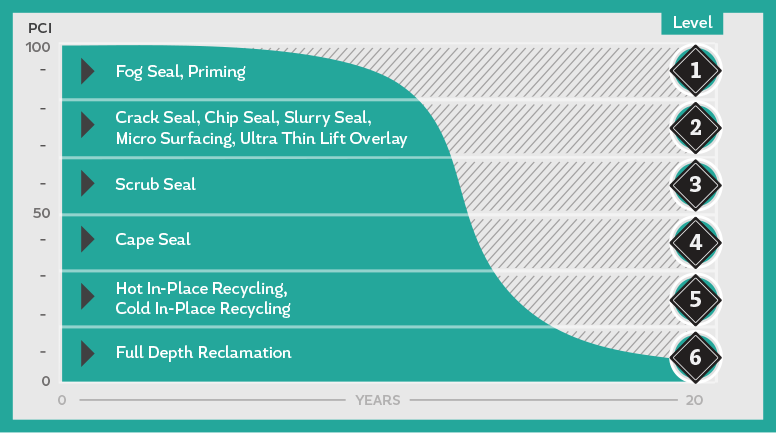65-70
Learn about the benefits of Conventional Micro Surfacing Treatments
Similar to slurry seals but more robust, micro surfacing is a pavement preservation method that can also be used to repair pavement. Micro surfacing is a mix of crushed aggregate, mineral filler and latex-modified, emulsified asphalt that is applied by a mobile mix paver. One major difference between slurry seals and micro surfacing is the polymer modification to the emulsified asphalt of a micro surfacing system.
At an average cost of $2.75 per square yard, micro surfacing allows for roughly 5-7 years of roadway life extension at a fraction of the cost of major road reconstruction.
Micro surfacing halts oxidation and raveling and can be used to increase surface friction, address profile leveling and to fill ruts. When used in reactive maintenance, the same life extension may not be achieved as when using micro surfacing as a preventative treatment. Additionally, micro surfacing should never be used to repair unsealed cracks that are ¼" or greater. Other preservation methods can address this type of road distress.
Micro surfacing is less expensive and requires less time to perform than major roadway construction and is less of an inconvenience to travelers. Best of all, it is eco-friendly. According to an environmental impact study performed by BASF Corporation, micro surfacing is significantly less harmful to the environment as compared to other methods of road reconstruction.
Best Practices
- Use a prepared mix design.
- Seal cracks ¼" or greater.
- Clean pavement to ensure proper bonding.
- Use specific micro surfacing equipment.
- Calibrate mix paver to ensure proper mix.
- Treated area should be protected from traffic until sufficiently cured.
- Use specialized rut fill box to fill ruts ½" or larger.
- Allow ruts 24 hours to cure under traffic before applying surface.
Download Success Stories
- Success Story: Lake Charles, LA
Conventional Micro Surfacing


